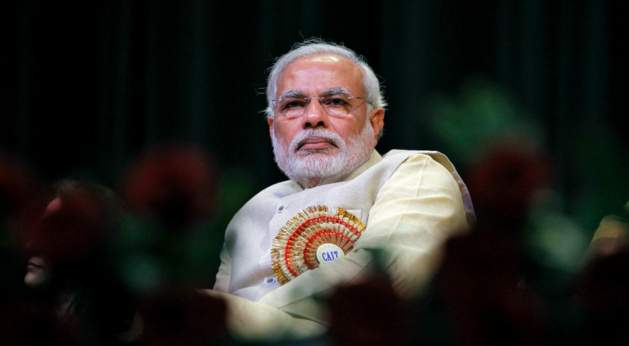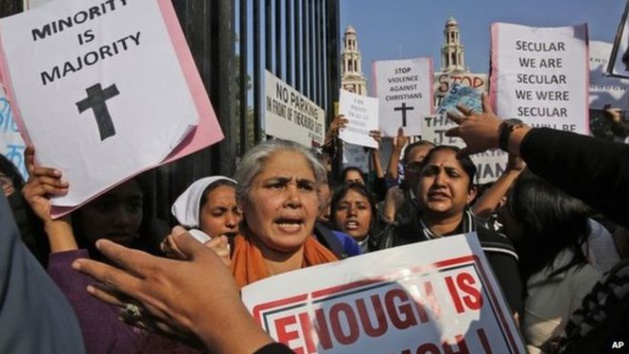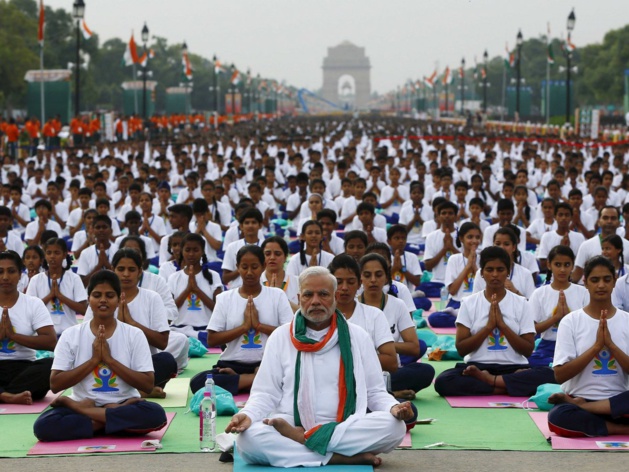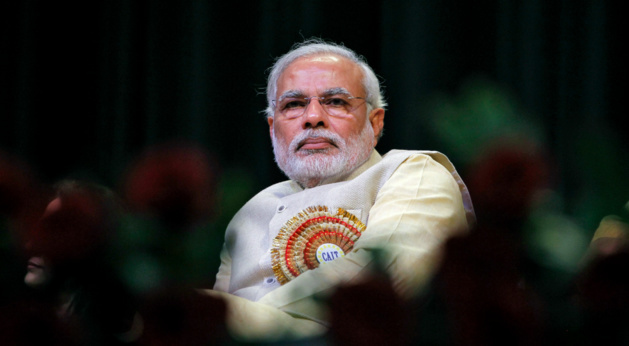
Credit: REUTERS
Narendra Modi did not take so far the Hindu nationalist decisions that he was expected to take. In a speech on August 15, 2014, for instance, he insisted on the necessity to reduce “the communal tensions” and to get rid of “the poison of casteism, communalism, regionalism and discrimination on social and economic basis”.
However, while he did not implement the measures aimed at “hinduising” the public life, the BJP did it at the level of regional states. Thus, for example, last March, the sale or possession of beef became punishable by five years in prison in Maharashtra state, of which Mumbai is the capital. This decision was announced as a mere measure for the protection of animals, but it can hardly be detached from religion – the cow is indeed a sacred animal for Hindus. Not to mention the thousands of jobs which will be lost, this reform has been seen by many as an attack against minorities; the beef meat market is indeed largely controlled by Muslims.
Simultaneously, a certain tendency to radicalization could be noticed within the Indian Hindu society. India has experienced an outbreak of inter-religious violence during the past few months: attacks against churches, rape of a nun, beating of Adivasi (tribal people), etc. But nothing has been done where most decisions, or at least reactions of condemnation from the government, could be expected. On the contrary, on February 5, 2015, for instance, 200 Catholics were arrested and imprisoned during a peaceful parade in New Delhi. The militants were protesting against the lack of support from the authorities in the attacks against their places of worship.
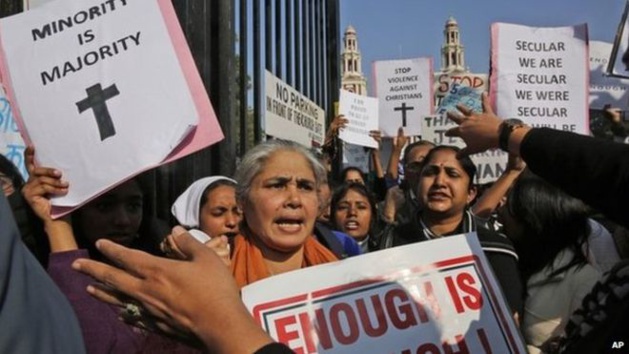
This tendency to opt for an extreme vision of Hinduism also has an impact on the status of women in the country. Only two years after the scandal of the collective rape and the murder of a student in a bus in New Delhi, gender and insecurity issues are far from being addressed. While the idea is spreading that it is women’s responsibility to protect themselves from rape, the BBC released last March a documentary devoted to it.
Through the interview of one of the rapists of the student in New Delhi, this documentary shocked a lot and triggered diverse reactions. He should have been broadcast on the Indian television at the occasion of the International Women’s Day, but it was eventually forbidden. However, despite the clumsy attempts to stop its broadcasting on YouTube, or maybe thanks to them, the film has been a genuine event and the debate never stopped to grow day after day on the Internet. The issue of the emancipation of women and the taboos of the traditional society are crucial in India.
These issues would necessitate significant measures in terms of information, education and propositions of public debates, but for now the authorities continue burying their heads in the sand.
The success of foreign policy: for an India greater than India
Known to spread statements of hatred against Pakistan, banned from entering the United States for inciting violence, Narendra Modi was subject, before his accession to power, to numerous doubts about his ability to represent India on an international scale. Yet, for over a year now, he has increased trips and has not stopped attracting positive attention from all over the world. The goal of his visits is to give back to India her panache. Narendra Modi wants a strong comeback on the international scene for his country and to consecrate it as a significant Asian power. The idea is also to encourage foreign countries to invest in India, around the “Make in India” project.
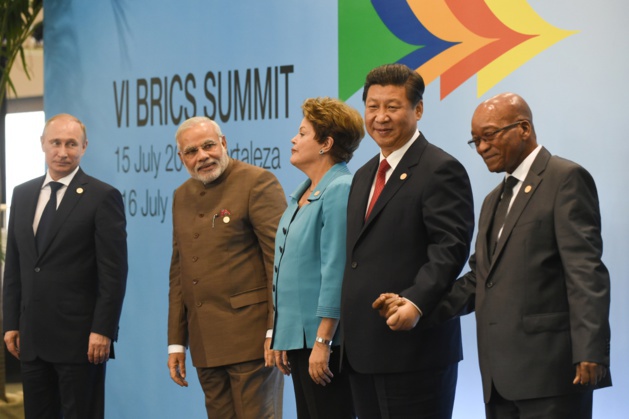
Very much turned towards the West, Narendra Modi chose to undertake his first visit to Japan, with which he hopes to create a privileged relationship. Regarding China, India’s historic rival, it has succeeded in setting up cordial links by meeting Xi Jinping in both countries. Displaying a low profile on the thorny issue of borders, the Indian Prime minister signed contracts worth some 12 billion dollars with Beijing. Some steps forward towards Russia have also been undertaken. Regarding the immediate neighbours, Modi knew how to calm tensions, notably with Bangladesh, and he does not hide his intention to make India the leader of the SAARC group, “South Asian Association for Regional Cooperation”.
His hands stretched towards the developing powers did not prevent him from having good relations with western countries. This year, he has been received as a distinguished guest by Barack Obama, François Hollande, or Angela Merkel among others. And in each of the cities he visited, the Indians living abroad reserved him a triumph. The Diaspora represents also a bridge with other countries, and he convinced her with flying colours.
A “persecutor” who became a hero?
For more than thirty years, India has never been in a situation of absolute majority in its Parliament. When we combine this with the charisma of the Prime Minister, it seems that for the first time, the country has the opportunity to experience a real change. Still facing an absence of serious opposition, Narendra Modi is already talking about a second mandate, noting both the scale of the power entrusted to him and the projects he initiated. These conditions of a stronger power, which is also more effective and centralized, should enable India to gain momentum, to unify, to propose a clearer image and most of all to revive Indian people’s faith in their country.
One thing is certain: during his campaign, and throughout this first year, Narendra Modi won a battle, the communication battle. The public perception of him went from the image of the tyrant to the image of a genuine savior, for citizens, businesses as well as for foreign countries. Today Modi seems to be popular everywhere he goes. And he does not hesitate to carry out “marketing ploys”: on June 21, for instance, his appearance on the mat in the crowd at the occasion of the first International Yoga Day was another huge success. He describes himself as a “workaholic” and hit the headlines throughout the year while his ministers were almost absent in the media.
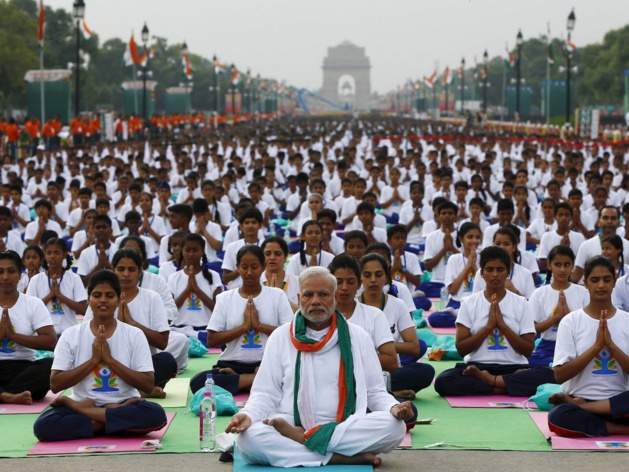
One may of course question the ability of one man to represent India in all its diversity. While the communication efforts paid off and seem to function around the figure “Narendra Modi”, they should not be detrimental to real political actions of the government nor to minorities.
It is hard to take stock of the first fourteen months in power. The disaster announced by the “anti-Modi” did not take place, nor did the wave of change wished by his electors. The Prime minister has not expressed its views on a number of key issues yet. After more than one year, his silence on some social issues has up to now enabled him to avoid great conflicts with his opposition that people expect, but some parts of the populations start to get impatient. We will thus have to wait a little longer to see the real effect of Narendra Modi’s policy.














